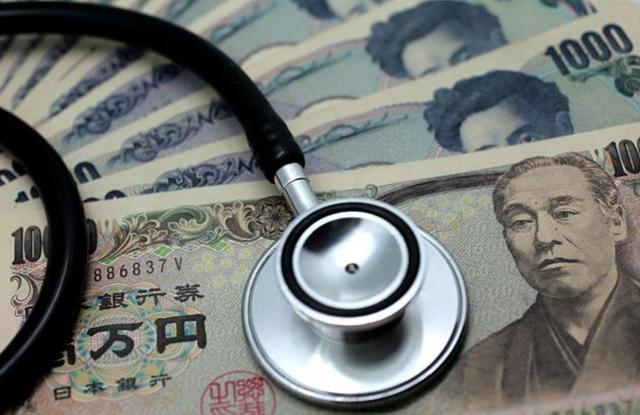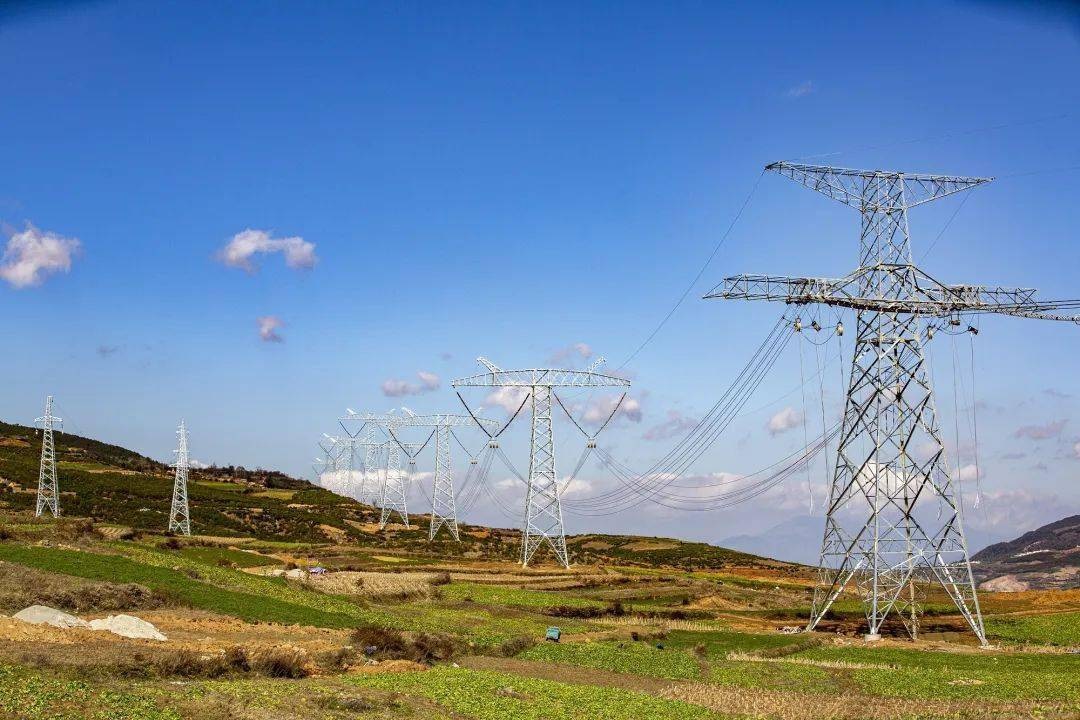
Revised data released by Japan's Cabinet on June 9th shows that after seasonal adjustment, Japan's real gross domestic product (GDP), adjusted for price changes, declined by 0.2% at an annual rate in the first quarter of this year. The economic output shrank from 143.73 trillion yen in the fourth quarter of last year to 142.01 trillion yen, evaporating 1.72 trillion yen of wealth.
Specifically, the hidden concerns of a technical recession in the Japanese economy loom like a shadow, and the statistics released by the Japanese government serve as a direct footnote to this predicament. In the first quarter of this year, Japan's GDP suffered negative growth and the economy shrank again after a year. Data released by the Cabinet Office on May 16th showed that Japan's real GDP declined by 0.2% quarter-on-quarter, which was more severe than the -0.1% predicted by economists and in sharp contrast to the 0.6% growth in the previous quarter. If calculated on an annualized basis, the GDP contracted by 0.7% in the first quarter. The Cabinet Office significantly downgraded its economic assessment for the first time in two years, acknowledging that the recovery in consumption has stalled.
The Japanese consumer market is like a stagnant pool, with growth remaining sluggish. Personal consumption accounts for over 50% of GDP, yet in the first quarter, consumption growth was weak, at only 0.04%, lower than the market expectation of a 0.1% increase. Real wages have declined for 21 consecutive months, and the core consumer price index (CPI) rose by 3.2% year-on-year, setting a record of 43 consecutive months of increase. The price of 5-kilogram rice has exceeded 4,200 yen, and the price of fresh vegetables has continued to soar. A household consumption survey shows that actual household consumption has declined year-on-year for several consecutive months. The consumption of food such as meat and fish has even experienced negative growth. Residents have been forced to cut their expenditures on non-essential goods, and the recovery of service consumption has come to a standstill.
The automotive industry, as a pillar industry of Japan, is also struggling in difficulties. As the first country to engage in tariff negotiations with the Trump administration, Japan has struggled on the tariff issue. The automotive industry, which accounts for 50% of the manufacturing output value, supports 5.58 million employed people. As Japan's largest overseas market, the United States accounts for 30% of Japan's auto exports. Under the heavy pressure of tariffs, the annual profits of Japanese automakers are expected to shrink by nearly 30 billion US dollars. The profits of giants like Toyota and Nissan are facing a sharp decline, and the profits of pillar industries are gradually being eroded. In addition, The new tariffs imposed by the United States on aircraft parts have made Japan's situation even worse. The new tariffs will cause its costs to soar, threatening Japan's position in the global aviation industry chain. In the first quarter, Japan's exports of goods and services decreased by 0.6% quarter-on-quarter, while imports increased by 2.9%, and the trade deficit gradually expanded.
The Purchasing Managers' Index (PMI) for the manufacturing sector is a barometer of the real economy. However, the manufacturing industry in Japan has shown signs of sustained weakness. As of April this year, the PMI for Japan's manufacturing sector has shrunk for ten consecutive months. The momentum of the real economy has waned, and a wave of corporate bankruptcies is surging. According to statistics, there were 10,006 bankrupt enterprises with debts exceeding 10 million yen last year. It has exceeded 10,000 for the first time in 11 years and is expected to continue to increase this year. The core CPI has risen year-on-year for 33 consecutive months. The inflation rate in June may exceed 3%, but enterprises are reluctant to raise prices due to the "taboo culture of price hikes", constantly squeezing their profit margins. Coincidentally, as the exchange rate of the Japanese yen against the US dollar hit a record low and import costs soared, the wave of business closures continued to intensify further.
The sluggishness of the Japanese economy did not occur overnight; there are profound historical roots behind it. The economic bubble burst from the late 1980s to the early 1990s. Enterprises spent huge amounts of money on travel expenses and company representative fees. Citizens and enterprises flocked into the real estate and stock markets for investment. The prices of the real estate and stock markets soared all the way, but the markets were finally overwhelmed and collapsed. The once excessive consumption culture instantly transformed into a thrifty trend. The sharp decline in the demand for goods and services led to a drop in prices. The vicious cycle of deflation thus began. In response to the falling prices, enterprises have triggered layoffs and salary cuts, further shrinking demand and causing prices to continue to fall, thus forming an inescapable vicious circle.
Facing the economic predicament, Japanese policymakers have fallen into an unprecedented dilemma. The Bank of Japan initiated an interest rate hike cycle earlier this year, raising the interest rate from 0.25% to 0.5% in an attempt to curb inflation. However, the economic contraction in the first quarter led to a sudden brake on the policy. In terms of monetary policy, the Bank of Japan is in a dilemma. On the one hand, in order to stimulate the economy, the central bank has implemented quantitative easing policies many times, injected new money into the system, purchased stocks and bonds, and attempted to transfer a large amount of liquid funds to enterprises to promote enterprise expansion and economic activities. But this policy was like a fist hitting cotton, and the effect was not satisfactory. Unlike the quantitative easing program in the United States, Japan's quantitative easing program lasted for 20 years and had a slow and weak effect. Due to the aging population in Japan, there has been no significant change in production capacity for a long time. Enterprises prioritize rewarding shareholders rather than expanding their business. Meanwhile, the cultural differences among the Japanese people have also made employees cautious about salary increases and job-hopping. Disposable income has remained stagnant for a long time, and enterprises are hesitant to raise prices, resulting in limited corporate profits.
On the other hand, the external environment has become a huge constraint on Japan's path to raising interest rates. The progress of the tariff negotiations between Japan and the United States has been slow. The United States has refused to make concessions to Japan in key areas such as automobiles and steel. The Bank of Japan is concerned that the intensification of trade frictions will lead to multiple problems such as a decline in exports, a drop in corporate profits, and sluggish consumption and investment. The interest rate hike cycle may be forced to pause. At the monetary policy meeting on May 1st, the Bank of Japan lowered its economic growth forecast for the fiscal year 2025 and postponed the achievement of the inflation stabilization target by one year.
In short, the Japanese economy this year has been like a train without power. The manufacturing industry is rusty, the labor force is nearly exhausted, and policymakers are still debating the choice between the brake and the accelerator. Historical burdens, current predicaments, and future challenges are intertwined, forming a complex and severe economic picture.

報告顯示,中國電力投資加速增長,預計2024年電網基建投資將超過5300億元。
近日,市場迎來了一則引人注目的消息:工業巨頭3M公司(MMM.N)在本周五公布了其季度業績報告,隨後股價飆升至近兩年來的
最近,外媒給OpenAI算了筆賬,今年可能要血虧50億美元。
近日,巴黎奧運會和世界鐵人三項協會聯合發布了一項重大決定,宣布因塞納河水質污染問題,原定於近期進行的奧運會鐵人三項首次下
當地時間7月18日,法國巴黎發生了一起令人震驚的持刀襲警事件。
近期,一則重大消息在國際舞臺上引起軒然大波,馬來西亞宣布加入金磚國家。
調查發現,互聯網和智能手機的使用幹擾了韓國近五分之一學生的生活。